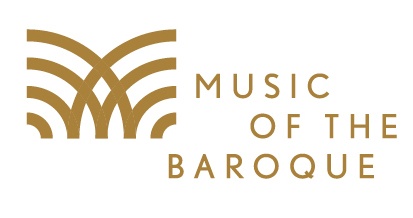
 **** “How to Know the Wild Flowers: A Map” is funny and sweet. Co-created by Julie Marie Myatt and Jessica Thebus with members of the Northwestern University community, this unique musical puts forth the idea that human beings are a part of nature—and need to be in nature in order to feel complete. In the course of watching this show, the audience learns about the beauty of the Illinois prairie and its diverse and colorful collection of wild flowers, seemingly untouched by modern civilization. In addition, this high energy performance is replete with teenage observations on life, death, and loneliness in relation to the COVID pandemic and shutdown. We discover that bathing our senses in the earth’s natural ecosystem can help us deal with grief, despondency, stress, and unhappiness. What a perfect story for April, which is Earth Month!
**** “How to Know the Wild Flowers: A Map” is funny and sweet. Co-created by Julie Marie Myatt and Jessica Thebus with members of the Northwestern University community, this unique musical puts forth the idea that human beings are a part of nature—and need to be in nature in order to feel complete. In the course of watching this show, the audience learns about the beauty of the Illinois prairie and its diverse and colorful collection of wild flowers, seemingly untouched by modern civilization. In addition, this high energy performance is replete with teenage observations on life, death, and loneliness in relation to the COVID pandemic and shutdown. We discover that bathing our senses in the earth’s natural ecosystem can help us deal with grief, despondency, stress, and unhappiness. What a perfect story for April, which is Earth Month!
Before we take our seats, each audience member is handed a blue lupin from one of the Saints; we are supposed to hold onto this (artificial) flower for the duration of the show. As my guest put it, “This extends the scenery into the audience.” Imitation wild flowers, in fact, permeate the theatre: They line the perimeter of the stage and all along the staircases in the front as well as the areas where we first walk in. These exist not only as props but take the form of the players who comprise the ensemble. We watch as the actors constantly mimic an assortment of flowers and lovingly take on different personas: from swaying in the breeze to dancing, singing, and performing joyously. In fact, it is the quality of the songs, music, and dancing throughout that makes this production memorable.
The tale is specifically told in a way that young people can relate to. Three college students Beth (Anne-Sophie Lacombe Garcia), Michael (Esteban Villacorta), and Anna (Sierra Rosetta) go on a hike to admire wild flowers on the vast Illinois prairie. Beth initially leads the three as they take turns talking to the audience about how the play takes place on the former ancestral lands of the Council of the Three Fires and other Native American tribes. This explanation then merges into the larger story itself, beginning with the Native Americans’ reverence of nature in all its glory. Anna (as it turns out) is half-white and half-Ojibwa. She is always searching for her ancestors’ original words for describing the natural world, such as the word for grass or trees. Yet what the three college students have in common is that they previously struggled with the social impact of the COVID pandemic and shutdown while in high school. So as to overcome social isolation and a lack of stimulation, each of them chose to gain an appreciation of nature. This was a far better alternative than dwelling on being deprived of a normal classroom education and a normal social life, such as attending a high school prom in person.
The show draws the comparison between the three students’ enjoyment of nature and that of the author Frances Theodora Parsons, a/k/a Fanny (Faith Walh), who lived through the Russian flu pandemic of 1889 to 1894. After losing her husband to the flu in 1890, Parsons was inconsolable. She subsequently took to nature for solace. There was already a guidebook in print about New England wildflowers, so she decided to study the wildflowers of Illinois. She described them in great detail in her notebooks, drew her own artwork, organized the plants into categories, and then published the compilation: the first of five guidebooks to gain wide acceptance. In fact, one of the songs in the show is dedicated to the over 200 species of wild flowers that she once admired and catalogued. Akin to Fanny’s grief for her husband are the emotions that Michael experiences after his grandfather dies. It’s unclear whether the grandfather passed away from COVID or something else; the point is that we see Michael could not grieve with others in the same way that might have happened before the COVID shutdown.
One other character in the show is the Birder (Nathan Hiykel), who sets his sights on keeping track of the number and types of birds he finds in the distance and sorting them by their sound, color, size, and shape. He notes this information in his diary. This is not unlike the way that Fanny chronicled each and every one of the plants that comprised the contents of her books. But while plants are rooted to the ground, birds will fly away. Thus, quiet is essential in order to record their appearance, behavior, and movements. That’s why the birder might have appeared quite unfriendly at first, but he explains himself to the audience.
We also learn that in addition to immersing ourselves in nature, involvement with music can help people become more content with their lives. Michael’s guitar and Anna’s ukulele thus have prominent places in this musical, and we must thank music director Otto Vogel for doing such a great job seamlessly incorporating all the songs and musical numbers into the story. Showstoppers include several dance numbers, one of which features three dancing orange-red orchids and another highlights a dance competition among flowers that wear purple tap shoes. Choreographers Jeff Hancock, Tor Campbell, Kristen Waagner could not have worked any better with the actors! Moreover, there are so many amazing flower costumes which are absolutely beautiful while still others are highly imaginative. Perhaps my favorite was that of the calla lily. Then too, the audience responded extremely favorably to the fuchsia flowers that were made up of women posing upside-down in tutus. Costume designer Josephine Everett must be commended for this array of apparel. Wig designer Hannah Andruss also needs to be credited for adding to the authentic look. Finally, Everett also served as puppet designer for the show and created realistic puppets that look like coyotes, rabbits, and chipmunks. Their handlers/puppeteers did a great job making all the animals look as realistic as possible.
Then too, the first thing we see upon entering the theatre is the gorgeous but relatively simple scenic design by Wynn Lee, featuring clouds hanging on strings along the back wall of the stage and a giant swirl in the middle of the stage floor. All of this is extraordinarily impressive when combined with Chelsea Strebe’s impressive lighting design! It’s so incredible to see the same background lit up with a range of colors to represent distinct moods, different times of day, and various types of weather. Sounds of nature (like birds, wind, thunder, and so forth) always prevail due to the fine work of sound designer Stefanie Senior. Then too, we witness the breaking down of the fourth wall when the audience is asked to become a part the sound track. My favorite moment was when we were encouraged to make the sound of rain. That is brilliant! And of course, there’s the scene when the lights come on over the audience, and we all hold up our lupins up into the air as an original mourning song is being sung. This creates a sense of unity among everybody present. As the flowers take on a life of their own, they also serve as a reminder that the life course is a part of the natural world.
The musical piqued my interest in finding out more about Fanny’s life, and there is a display in the theatre lobby by dramaturg Jooyoung Cho which describes her biography in some detail. But the point of the story has more to do with life’s parallels and the need to learn from the earth. We come to realize that contemplating nature’s bounty is just as important as acquiring any other type of education. Nature can be viewed as a source of strength and inspiration that can bring solace and refreshment to all of us.
“How to Know the Wild Flowers: A Map” is playing through April 28, 2024, at Northwestern University’s Virginia Wirtz Center for the Performing Arts, Ethel M. Barber Theater, 30 Arts Circle Drive, Evanston.
Tickets are: General Public $25
Senior Citizens $22
NU Faculty Staff $20
Full-Time Students $12
Full-Time NU Students $8 in advance, $12 at the door
A per ticket service charge will be added to all online ($3 per ticket) and phone ($2 per ticket) purchases.
Performance schedule:
Friday 4/19 7:30 p.m.
Saturday, 4/20 7:30 p.m.
Sunday, 4/21 2:00 p.m.
Thursday, 4/25 7:30 p.m.
Friday, 4/26 7:30 p.m.
Saturday, 4/27 7:30 p.m.
Sunday, 4/28 2:00 p.m.
For more information and to purchase tickets, go to: https://wirtz.northwestern.edu/wild-flowers/.
For general information and to learn about other offerings at Northwestern’s Wirtz Center, visit: https://wirtz.northwestern.edu/.






More Stories
“Dummy in Diaspora”
“The Magic School Bus: Lost in the Solar System”
“February House” reviewed by Julia W. Rath